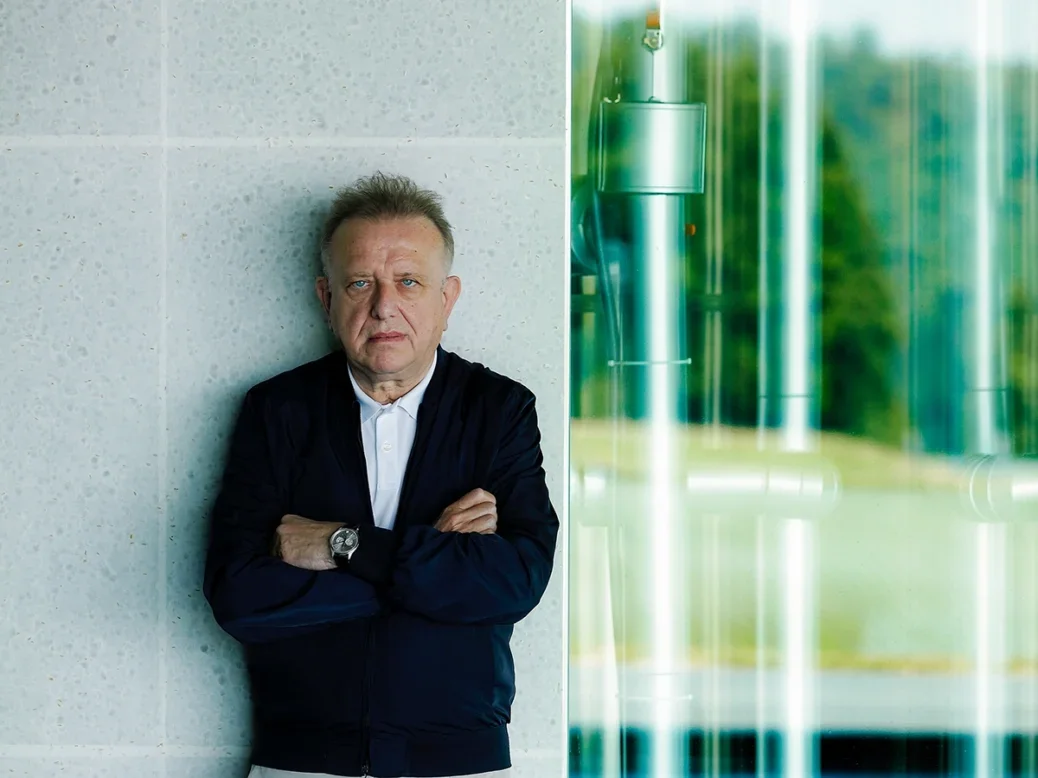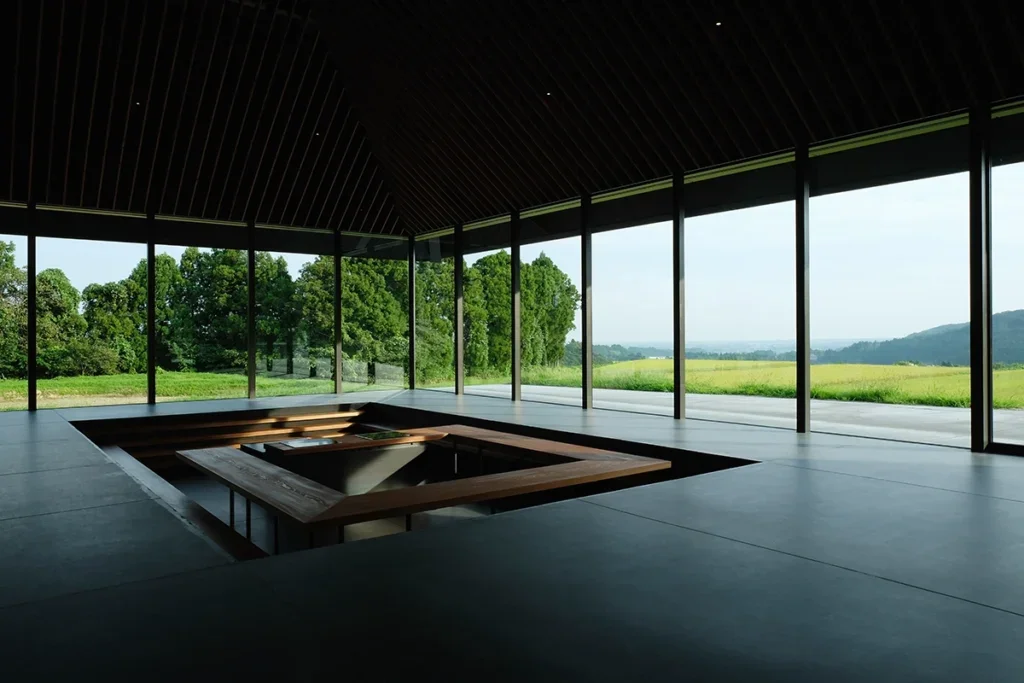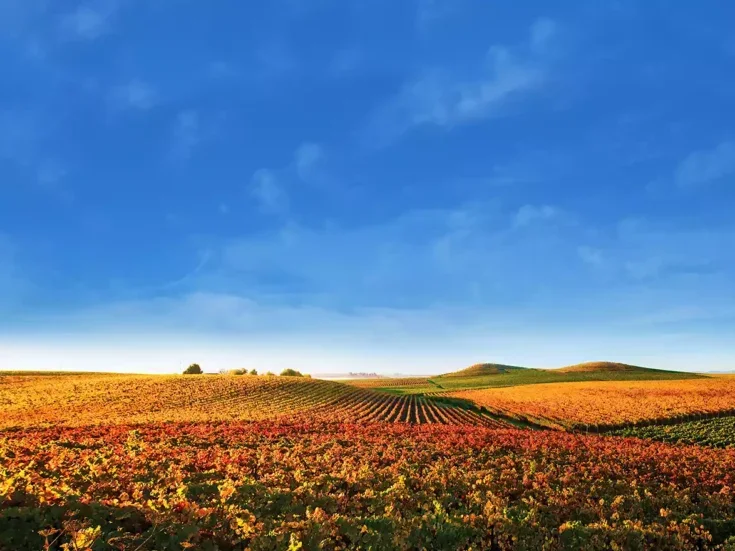
After 28 years as chef de cave at Dom Pérignon, Richard Geoffroy set himself a new challenge. Margaret Rand talks to the new kid on the (sake) block.
Until 2018, Richard Geoffroy was Dom Pérignon made flesh. As chef de cave, he identified with the brand completely: “I can’t draw a line between what is DP and what is not,” he said once of his closeness to it. “It’s that intimate.” In addition, he believed that to experience DP fully, to understand it, one also needed to experience all the vintages that were made but not declared—which meant, effectively, that only he could understand it. It’s a brand of Champagne, but it sometimes felt as if it was being elevated to a sort of vinous Eleusinian Mystery, way above the heads of you and me.
Then, one day, Geoffroy left and went off to make sake. How was that? “Surprisingly easy,” he says. “In all honesty, it wasn’t difficult at all.” Oh, go on. No, he says; he just switched from one project to another. “Probably because I had had so much anticipation of the new project, I was ready for it. I had to be very dedicated, so focused that there was no room for anything else.
“I had to move on. It was fantastic at DP, so powerful, but I was there for 28 years. There was a danger of settling into a comfort zone. I instinctively knew I had to move on. My way of managing, of keeping aging gracefully, is to set myself new challenges with new people, with all respect for the past; it’s very personal, very intimate—voilà. I’m not looking back.”
It will prove, in this piece, as difficult to separate Geoffroy from IWA (his sake) as it was to separate him from DP. The interesting thing about interviewing Geoffroy now and interviewing him then is that he has not changed one iota. Why would he, you might ask. He’s no longer part of corporate life in the same way, but he still does consultancy work, and by now two (and possibly all three) of his sons are involved in the (separate) consultancy business. He still has the same air of permanent exhaustion, and he still slumps in his chair in a way that makes Putin look upright. The introspective meditations about DP are now introspective meditations about IWA. The main difference, probably, is that now he flies in economy class. “Now is the best period of my life ever. There is a sense of entrepreneurship that is so personal. I am putting everything in this project, and more; I’m putting everything on the table. I feel so fit, it’s as simple as that.”
Why sake? Because Geoffroy fell in love with Japan. “DP led me to Japan—and I can’t thank them enough for that—and Japan led me to sake.” It was aesthetics that attracted him: “In Japan, aesthetics are everywhere, as much in the products as in the people themselves, the way they behave collectively—the global considerations of aesthetics. There is a way of working that is so minimal.” In particular, he says, he was drawn to a place at the base of one of the sacred mountains of Japan. His love of sake started slowly, and gradually he got more and more hooked. Eventually, “I thought I would make something, contribute to something, without breaking the essence.” He discovered sake in 2000, and in about 2015 he started seriously considering a project.
But sake, he says, has been in decline roughly since the financial crisis of 2008. Younger people turned to beer, and sake became a bit middle-aged, a bit of a mum-and-dad drink. While he is certainly a winemaker, Geoffroy is also—and perhaps even more—a blender. “Give me water, and I’m pretty sure I’ll start blending water,” he says. “I blend my orange juice at breakfast.” What he wanted from sake was something that sake is not: Traditionally, it’s all about the nose, and it’s short on the finish. But he wanted flavor as well as nose… and length and balance and complexity. “Balance is a magical thing. It must be seamless, as in Champagne. I had to reset the traditional balance. I wanted the phenolics as low as possible, something gliding, an element of sour, bitter, sapid, saline. Whenever people dislike sake, it’s because of the aftertaste. It can be abrupt, with bitterness and the heat of alcohol; disharmonious. It can be, frankly, rather brutal. Some [examples] are not that brutal but fade away.” Geoffroy’s vision was not to diminish the nose, but to increase the palate and finish; change the texture, change the balance. Balance equals weightlessness. “It’s actually very Japanese, making something that is weightless but intense, or colorless yet intense. It’s paradoxical.”
So, Geoffroy wanted to go to Japan, a place usually regarded as somewhat conservative in its ways, and make sake in a way that nobody ever had before. Time for a brief recap of how he got to this point.
Renewal and the quest for perfection
Geoffroy comes from a Champagne-growing family but felt a life in the family firm was too predestined, so he went off to study medicine. Gradually, though, he realized that medicine was not what he wanted to do, so he switched to enology, and then went to California, where he worked at Domaine Chandon. Moët then offered him a job as technical advisor in Champagne, which in turn took him to DP. He started working for Dominique Foulon, then chef de cave, in 1990, and took over from him in 1996.
Now, he says, he has been able “to peel things off, be leaner; I like it. It’s easier; it’s to the point. You have to lose your ballast. It’s important to throw things off, be more experienced, take more risk, scrub a bit, get back to the core. DP is universal in many ways; it has applications to other professional correspondences. Japan offers a sense of renewal, a sense of exigence—I don’t dare to say perfection; of pushing. I feel I’m on a journey, clearly pursuing something. Pursuing a note of beauty, an idea of beauty that could be unusual enough, embracing enough, uniting countries, people—the conundrum of being local and universal.”
But an idea of beauty is one thing. Making detailed decisions about how to get there is another.
Geoffroy got together “a community of local bankers” to finance the project; they now own nearly 10ha (25 acres) of land, which is leased back to the original farmers, and they buy in rice, as well. They’ve built a brewery. These apparently straightforward moves, when viewed through a winemaking lens, are all points of no return.

What about terroir? Does it mean anything in sake? Does it exist? “I’m still trying to make out the notion of terroir. I’m not sure about it in Japan,” he says. In the end, he thinks it might be about the process rather than the origin. “Some people talk about terroir but polish the rice to the utmost extent and remove any terroir. The pure starch element of the rice can’t be fermented until it has been converted to fermentable sugars. I don’t see an element of terroir in this.” Instead, he points to the layout of the brewery: “There is no such thing as two identical layouts in Japan’s sake breweries, and when you add the macrobiology of the place, the bacteria in the preparation, the wild bacteria—a lot of this is terroir. The microbiological ambience of the brewery has a big impact. I’m sure there’s an impact of rice variety, but I’m not sure about weighting the elements [of terroir].” There are roughly 100 varieties of sake rice (which is different from edible rice), though he reckons that only between ten and 20 of these are widely grown. “It’s a game of options. I thought winemaking and Champagne producing were high on options, but sake beats them by far.”
If terroir resides in the brewery and in the brewery layout, how on earth do you design your brewery when no two are alike? In the case of IWA, by hiring a renowned architect (Kengo Kuma, who also designed Tokyo’s Olympic Stadium) and then, presumably, seeing what happens. The design is based on a traditional Japanese farmhouse, and the layout is fluid, clear, and functional—and not based on any other brewery. “In life, in anything, you have to plant a flag somewhere, and then adjust. We’ll see.” He adds: “With the right elements, assemblage is a piece of cake. Blending is easy if the objectives are clear, and if you can formulate and specify the components. Otherwise, it’s a struggle.”
A new sensation and versatility at the table
What of the struggle of inserting himself into the traditional and perhaps inward-looking world of sake? “I am curious about how the Japanese will perceive this. Not anxious, but curious. I ponder the fact that people might want to be conservative guardians of the temple, of orthodoxy—I’m sure there are some, but I haven’t run into them. In Japan, people are not too loud, not too vocal. In two years, IWA has established itself as a player. There’s been an amazing follow-up; people are experiencing a new sensation.”
So far IWA has not been entered for any competitions. “It’s a work in progress. I’m dipping a toe into 1,200 years of history, with all due respect to the existing world of sake. My intention is not to be a troublemaker; I’m following my own path. I don’t want to be misunderstood. Judges’ references are too strict and don’t allow expression outside that framework. Things will evolve. As I gain acceptance, I will start being confident enough. I have to be very focused, and not try to please judges. “In all of this, I’m taking risks. Whenever you experiment, you take risks. I want to be experimental forever, continually experimental.”
Building a brewery helped with integration, he thinks. “The brewery is an act of faith in the future of sake. There hadn’t been a new brewery for years. The industry had been declining for so long, it was more about closing down than building.” There were 3,700 breweries in the 1970s; there are about 1,200 now.
IWA is currently 50/50 exports and the domestic market; it’s being rolled out slowly, market by market, with a focus, at least initially, on restaurants. It goes with food, certainly, but it also finds favor with chefs in a way that wine often doesn’t. It never ceases to amaze, the way that so many chefs don’t care about wine. Geoffroy suggests, “Perhaps if they start thinking about wine, it narrows the possibilities for food and creation and invention.” And perhaps that is the reason. But he says they do find sake interesting, and so do sommeliers, who gradually move away from pairing it with seafood and tempura, and start pairing it with red meat, game, and all sorts of things.
I should confess that I am a sake novice, partly because I have never enjoyed it. I enjoyed IWA, though, the second bottling more aromatic than the first. And what was interesting was how it was a good match with every single dish we tried. It’s true that my palate will need more practice before I find matches of IWA with food as rewarding or as interesting as I would find matches of food and wine. But that simplicity could itself be appealing, in a pared-down, Japanese sort of way, perhaps.
Geoffroy has not learned Japanese and has no intention to do so. “It would be a major investment, which I couldn’t afford.” He has a bilingual CEO and good French–Japanese translators. One thinks of A Midsummer Night’s Dream, and Peter Quince’s exclamation: “Bless thee, Bottom, bless thee. Thou art translated.” Metamorphosis. It’s surprisingly easy.






